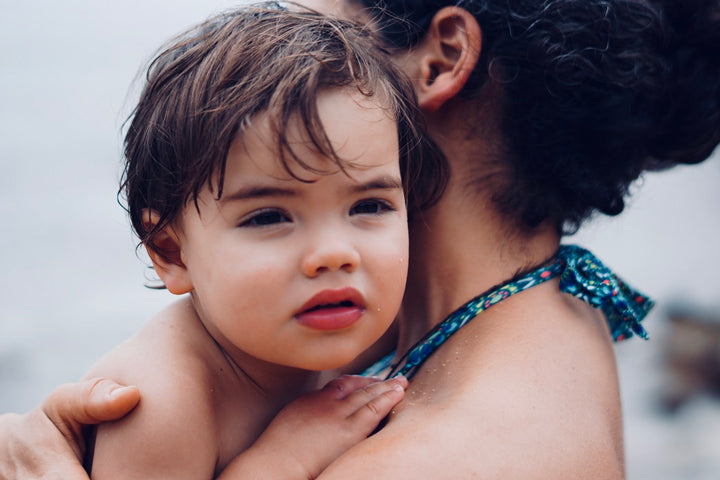You notice a few spots and redness on your toddler’s skin. Don’t panic! There are many types of toddler rashes. Here’s the lowdown on the most common ones and when to see a doctor.
Your Child Has Scaly, Red Patches
If you notice some red, scaly bumps or patches on your child’s skin that have a red ring around them, these are classic signs of ringworm. Caused by a fungus that lives off dead hair, skin and nail tissue, WebMD states that ringworm is passed on by skin contact. It needs to be treated with an antifungal cream. Yup, time to go visit the doctor!
Your Child Has Red Sores And Blisters
Although red sores and blisters are common symptoms of many types of rashes, if your child’s sores and blisters ooze liquid and have a yellowish crust, then they’re probably impetigo, which is a rash caused by bacteria that’s spread from sharing towels and toys. You’ll need to go to the doctor for this one, as your child will need to be treated with antibiotics, either in lotion, pill form or even oral with a sippy cup.

Your Child Has Tiny Bumps And Red Skin
A heat rash is characterized by tiny bumps on the skin and red skin that surrounds them. It might be prickly or itchy, as Cleveland Clinic states. Babies tend to get heat rash in their elbow creases, armpits, groin and on their necks. Older kids might have it on the back and/or chest.
Treat it quickly and effectively by getting your kid out of the heat and into a cool area. Remove excess clothing and use a damp washcloth on the skin to reduce inflammation. Avoid using lotions to treat the rash as this can block pores, worsening the heat rash.

Call a doctor if the heat rash seems to be producing an infection, such as if your child has a fever, chills, scabs, blisters, pus, or swollen lymph nodes in the groin, armpit, or neck, as Cleveland Clinic reports.
Your Child Has Red, Dry, Itchy Skin
Contact dermatitis is a skin reaction from coming into contact with irritating substances, such as certain soaps or laundry detergents, and sometimes even urine in a diaper. In other instances, things like poison ivy and metals in jewelry, such as nickel, can cause dermatitis. The skin will react with a rash by becoming itchy, red, dry, swollen, and painful. There might even be blisters that crust over, but the symptoms can be quite varied, as reported by the University Of Rochester.
To relieve symptoms, wash your child’s skin with soap and water once symptoms appear. Cold cloths on the skin can help to make your child’s skin feel less sore and itchy. Your doctor might also prescribe corticosteroid cream or antihistamines, but always check with him/her before going ahead with something bought over the counter, as that might not be suitable for your child’s age and condition. Besides, it’s always safer to get dermatitis (and any other condition) diagnosed by a healthcare professional before medicating your child.
Sources: WebMD, Cleveland Clinic, University Of Rochester
Editor’s Note: Giulia Simolo is a freelance content provider & writer for Daphyl’s LLC. Daphyl’s is a USA based multi-national world leader in safe, innovative, Licensed Rock N Roll, branded baby gear. The opinions, advice and assertions made in this article are for entertainment and information purposes only & are solely those of the author.

